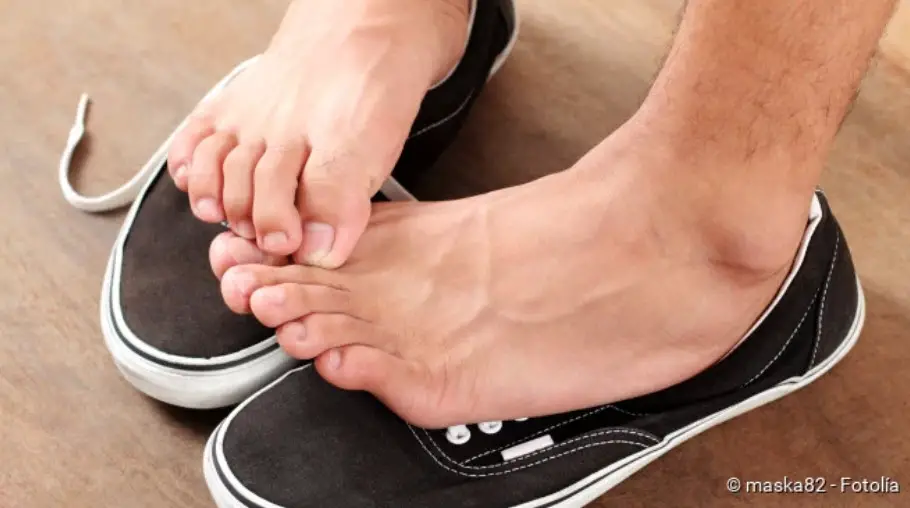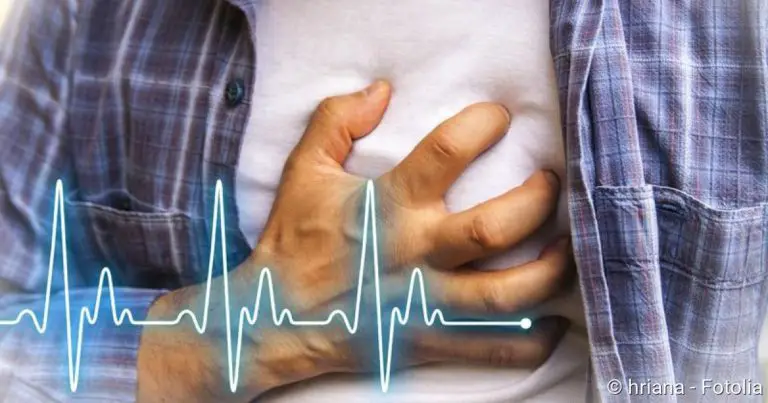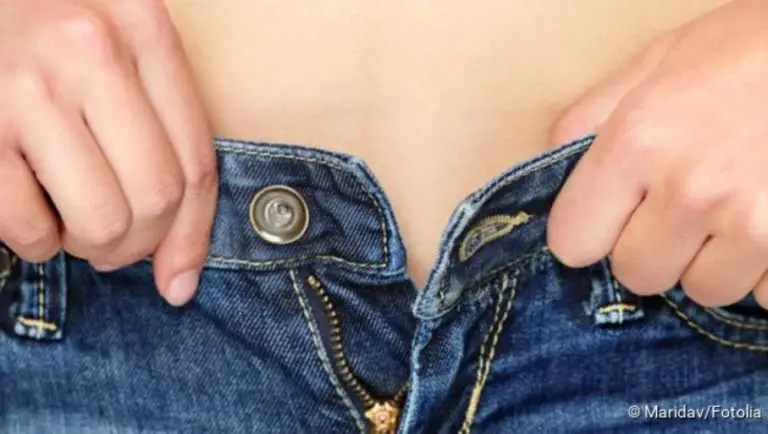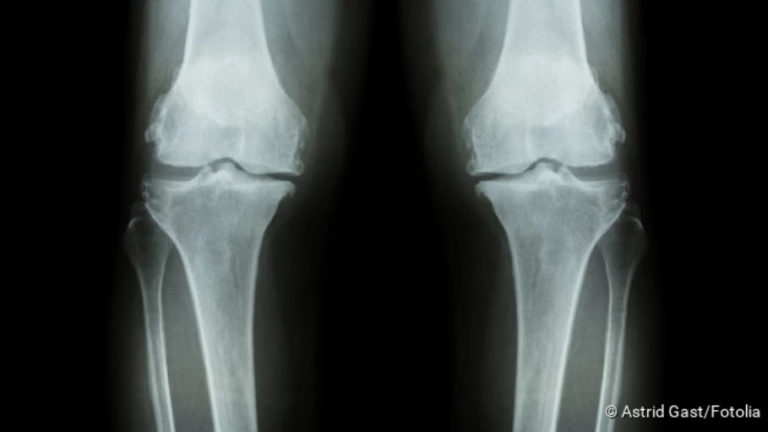Athlete’s foot: symptoms, infection, therapy
Athlete’s foot: symptoms, infection, therapy
Itching and scaling on the feet are possible symptoms of athlete’s foot (tinea pedis or tinea pedum). This skin fungus disease of the feet is very contagious, but can be treated well. Without therapy, however, it can become chronic. Read more about the topic: What symptoms does athlete’s foot cause? What to do about the complaints? How does the doctor even diagnose athlete’s foot? How can it be prevented?

Brief description: Foot fungus
- Description: Skin fungus disease on the feet, mostly caused by filamentous fungi
- Symptoms: Itching, flaking, sometimes blisters and weeping
- Treatment: antifungal agents (antimycotics) used either externally (creams, ointments etc.) or internally (tablets)
- Triggers: warm and humid environment, weakened immune system, damaged acid mantle of the skin
- Contact person: dermatologist or specialist for foot diseases (podiatrist)
- Prognosis: With specific therapy athlete’s foot usually heals completely.
Foot fungus – Symptoms
The symptoms of athlete’s foot are initially limited to the skin at the beginning of the infection. Mostly affected persons first feel an itching, then the skin reddens slightly and begins to flake. It always does the latter, even in healthy people. However, with a athlete’s foot infection, the loosening pieces of skin are larger and more numerous. You can see them with the naked eye. The flaking of the skin increases within a few days. Often whitish skin plates form on the foot, which look a little like calluses but are much softer.
The skin scales are not only not very attractive. Fungal spores can survive for days in the rubbed skin and be transmitted to other people.
If you do nothing against the athlete’s foot infection at this stage, cracks can form in the horny skin, which can hurt when walking. Sometimes the affected areas also moisten or small blisters form, especially on the sole of the foot.
If the blisters burst open, this can also become painful. In addition, other pathogens can easily penetrate. In this way, bacteria can cause severe skin inflammation. This can be a erysipelas, for example. It develops very often with athlete’s foot between the toes (interdigital mycosis).
Theoretically, fungal infections can also heal with the help of the body’s own defence system. But the problem is that fungal infections affect the epidermis. Here it is much more difficult for the immune cells to kill fungal threads than if they were to sit a little deeper in the skin. In addition, untreated athlete’s foot can also spread to the nails. And nail mycosis is much more difficult to treat.
After only a few days of treatment with an anti-fungal (antimycotic) cream, the itching stops and the redness on the skin, especially in the area between the toes, decreases. This is deceptive, as there is a risk of relapse after the cream is discontinued. This relapse is rather due to the discontinued cream therapy and not necessarily to the renewed infection by fungal threads in clothes or shoes.
You should carry out athlete’s foot treatment at least one week after the acute symptoms have subsided, i.e. usually at least ten days. A tip: The area between the toes is particularly important. If you dry out damp areas here, for example with linen cloths, this supports your cream therapy.
Forms of athlete’s foot
In the space between the toes, athlete’s foot is particularly fond of settling. He likes the warm and humid conditions that prevail there. Besides the interdigital mycosis there are also other forms of disease. Overall, physicians distinguish the following forms of athlete’s foot:
Athlete’s foot between the toes (interdigital form)
Here, the first symptoms appear between the toes, most often between the third and fourth toe. Little by little the athlete’s foot then spreads to the other spaces between the toes. The affected skin is reddened and itches. Small blisters form on the sides of the toes. If the skin is softened, bacteria can also settle. This is noticeable, for example, in an unpleasant smell.
Cornified athlete’s foot (squamous-hyperkeratotic form)
It mainly affects the soles of the feet: The symptoms of athlete’s foot first appear on the balls of the feet and the heel. Then they spread to the edges of the feet and the back of the foot. The affected skin areas are scaly and excessively horny. Many patients simply believe that they have particularly dry skin on their feet.
This form of athlete’s foot is also called “moccasin mycosis” because of its settlement, whereby the term “mycosis” means fungal disease. Diabetics are particularly susceptible to this.
Athlete’s foot with blisters (vesicular dyshidrotic form)
It is the rarest form of foot fungus. Symptoms in the form of blisters occur mainly on the edges of the feet and the arch of the foot. Here the cornea is quite thick. Therefore the bubbles do not burst open, but rather dry out. In addition, those affected complain of itching and feelings of tension in the foot.
Spread to other parts of the body
Even if the name suggests otherwise: Foot fungus does not stop where the feet stop. If it remains untreated for a long time, the symptoms initially spread from the feet to the ankles. In addition, the so-called skin appendages can be affected. This is what doctors call hair and nails. For example, a mycosis pedis can also develop into a nail fungus (onychomycosis).
If you scratch the affected areas with your bare hands and then touch your face (e.g. lips, ear), you can also transmit the fungal pathogens there. The same can happen if you dry your infected feet and the rest of your body with the same towel after showering or bathing.
Foot fungus treatment
Treatment of athlete’s foot is in itself simple and allows the infection to heal completely. However, it is important that it is carried out in a timely and consistent manner. Untreated, the fungal disease can become chronic.
In order to get rid of the athlete’s foot, the doctor prescribes fungicidal agents, so-called antimycotics. They work in different ways: Some kill the fungi present (fungicidal effect), others inhibit the reproduction of the fungi (fungistatic effect).
Frequently used antifungal agents in the treatment of athlete’s foot are terbinafine, clotrimazole, econazole, itraconazole, miconazole and bifonazole. Each of these active ingredients is particularly effective against certain types of fungi.
At the beginning, however, the doctor usually does not (yet) know exactly which fungus is responsible for the infection in a patient. Then he prescribes a so-called broad-spectrum antifungal. This is effective against several species of fungi at the same time. As soon as the exact pathogen has been identified, the athlete’s foot therapy can be switched to an antifungal agent that specifically helps against the pathogen in question.
How are antifungal agents used?
Whether an antifungal agent is used externally or internally depends on how advanced the athlete’s foot is.
In the initial stage an external therapy (superficial treatment of athlete’s foot) with creams, ointments, gels or powder is usually sufficient. However, if the infection has already spread over a large area (possibly also to the nails), anti-fungal drugs are sometimes necessary (such as tablets containing itraconazole or terbinafine). Such an oral medication therapy is often necessary if the athlete’s foot symptoms have not improved after one to two weeks despite external treatment with antifungal agents.
Whether externally or internally – the antifungal agents must be used regularly, exactly as the doctor has prescribed. For example, it may be necessary to apply an antifungal cream two or three times a day.
Patients should also follow the doctor’s instructions for the duration of treatment. Because athlete’s foot is quite persistent. Therefore, the treatment of athlete’s foot is usually continued for three to four weeks after the symptoms have subsided. This reduces the risk of a relapse after stopping the medication.
Foot fungus: What helps besides orthodox medicine?
Many people swear by athlete’s foot home remedies such as apple cider vinegar or tea tree oil. However, the effectiveness of such natural remedies is often not scientifically proven or not well investigated.
However, there are many other tips that can certainly support the success of athlete’s foot treatment:
- Always dry your feet carefully after showering or bathing (especially between your toes) before putting on socks and shoes. Use a different towel for the feet than for the rest of the body. No one else should use your “feet towel”.
- Allow superficial antifungal agents (cream, ointment, etc.) to penetrate the skin completely before putting on socks or shoes. This can take up to five minutes.
- Make sure during and after the athlete’s foot treatment that your feet are not sweaty or damp for a long time.
- Change your socks daily during the athlete’s foot treatment.
- In case of a foot fungus infection you should wash worn socks at least at 60 degrees, better at 90 degrees.
- If necessary, use special hygienic detergents which kill the pathogens in a targeted manner.
- Change towels and bed linen more often than usual during a foot fungus treatment and wash them on boiling linen.
- Also wear socks in bed at night. In this way you prevent the fungi from being transferred to the bedding.
- The shoes should be sprayed with a disinfectant spray on a regular basis (during athlete’s foot treatment preferably daily).
During a foot fungus treatment you should not go to the swimming pool or sauna in order not to infect your fellow men. Also avoid other places where many people (could) walk around barefoot. In the home bathroom or shower, patients should also wear slippers.
Foot fungus: Causes and risk factors
Athlete’s foot is usually caused by filamentous fungi (dermatophytes), mostly by the species Trichophytum rubrum. This can also cause other types of skin fungus diseases and nail fungus.
Dermatophytes have special mechanisms by which they can damage the acid mantle of the skin and adhere to the skin cells. However, they do not penetrate into deep layers of skin or tissue, but instead mainly affect the uppermost layer of the skin, the so-called cornea.
However, they usually only succeed if the immune system is weakened or the skin is damaged. Otherwise, the protective mechanisms of the skin (skin flora and acid mantle) destroy the fungal spores before they can cause an infection.
Foot fungus: Risk factors
There are various risk factors that favour athlete’s foot. These include:
Infectious skin flakes: In people who suffer from athlete’s foot, the skin flakes that come off also contain fungal components. If healthy people come into contact with these infected skin flakes (for example when walking barefoot), the probability that the athlete’s foot is transmitted to them is high.
In addition, fungi can of course also be transmitted by direct physical contact. Particularly at risk are people who practice martial arts such as judo (no shoes!). Skin fungi (Tinea corporis) can also be transmitted from animals (especially rodents) to humans. In Germany, however, this is rather rare, especially for athlete’s foot.
Risky places: Oases for foot fungus pathogens are for example swimming pools, sports halls and sports fields. There is also an increased risk of infection in hotel rooms, public showers and washrooms and on camping sites.
Wrong shoes: Very tight shoes can become an incubator for athlete’s foot. If you often have sweaty and therefore damp feet and wear closed shoes (like sneakers), you also create an ideal habitat for fungi. People who have to wear tightly fitting shoes at work (for example construction workers or sewer workers) also have an increased risk of athlete’s foot.
Tinea pedis is also called “Athletes foot” as we know. This is because athletes wear sneakers, which promote perspiration, and often use public showers and changing rooms. They therefore get athlete’s foot especially often.
Other diseases: Certain diseases can also increase the susceptibility to athlete’s foot. This applies, for example, to circulatory disorders in the legs, for example, as a result of diabetes. People with a weakened immune system or a foot malposition also suffer more frequently from athlete’s foot. Also allergic disease and neurodermatitis increase the risk of athlete’s foot.
Family predisposition: In some families, athlete’s foot occurs more frequently, even if the members no longer live together.
Athlete’s foot is much less common in children than in adults. Children have a thicker and even better circulated skin. This protects against a fungal infection. The most common cause of athlete’s foot in children is sweaty feet caused by incorrect footwear. Parents should therefore pay particular attention to what the offspring wear on their feet.
Foot fungus: examinations and diagnosis
In case of possible signs of athlete’s foot, the right contact person is the family doctor or a specialist in foot diseases (podiatrist).
The doctor first takes your medical history (anamnesis) in consultation with you. You have the opportunity to describe your complaints in detail. With targeted questions, the doctor collects further information that may be important for the diagnosis. Possible questions are, for example:
- When did you first notice the symptoms?
- Have you noticed skin changes in other parts of your body?
- Have you ever had illnesses with such symptoms in your family?
- Do you often spend time in public facilities such as swimming pools or changing rooms?
This is followed by a physical examination. First of all, if athlete’s foot is suspected, the doctor takes a close look at the feet. He also takes a skin sample (biopsy), usually at the scaly edge of a focus of infection. He examines this tissue sample under the microscope. In this way he can determine whether it is really athlete’s foot. This is because there are other diseases of the feet that can cause similar symptoms to athlete’s foot.
It is important to know what kind of fungus is causing the infection. Only in this way can the doctor select the anti-fungal agent (antimycotic) for the therapy that is most promising. To determine the fungus, the tissue sample taken is examined in the laboratory. A fungal culture is grown there, which means that the fungus is kept at a temperature at which it can multiply optimally.
It usually takes between one and four weeks until the fungal colony is large enough to identify the pathogen accurately. During this time, however, a (non-specific) therapy with a broadband antifungal agent can be started.
Foot fungus treatment during pregnancy
If women get athlete’s foot during pregnancy or while breastfeeding, they should always consult a doctor or pharmacist before taking any medication. The athlete’s foot in itself does not pose any danger to the child. However, some drugs used to treat athlete’s foot should be used during pregnancy. Although a direct damaging effect of these drugs is not known. However, there is generally too little knowledge available to assess the risks correctly. The use of these athlete’s foot medicines during pregnancy is therefore not recommended.
Athlete’s foot: course and prognosis
Foot fungus is generally well treatable. With timely and consistent therapy it heals without consequences. It is therefore important to detect and treat athlete’s foot as early as possible. Without therapy it spreads further and further (for example on the nails – nail fungus). The chances that a foot fungus will regress on its own in the further course of the disease are extremely small.
The skin areas affected by athlete’s foot also form an easy entry point for bacteria. A frequent complication with athlete’s foot is an additional skin infection with bacteria (bacterial superinfection). This can be a erysipelas, for example. This is an inflammation of the skin, in which the skin reddens, swells and hurts. Fever can also occur.
Prevent athlete’s foot
Athlete’s foot can grow well wherever it is moist and warm. Therefore, such good growing conditions on the feet should be carefully avoided. This means, for example, carefully drying your feet after swimming, bathing or showering, especially in the spaces between your toes. Parents should teach their offspring these basic rules of foot care as early as possible. This reduces the risk of athlete’s foot in children.
It is also important to wear cotton socks and leather shoes if possible. This is because socks made of synthetic materials and shoes made of synthetic materials promote the formation of sweat and prevent moisture from being transported away. This quickly creates the warm and humid environment in which athlete’s foot thrives.
To prevent athlete’s foot you should also change your socks daily. This is especially true if you have a tendency to sweaty feet.
In summer you should wear open shoes (such as sandals) as often as possible. Walking barefoot is also good for your feet – but not in swimming pools, saunas, public washrooms and changing rooms, hotel rooms and camping sites! In such places the risk of infection for athlete’s foot is particularly high. Therefore, you should always wear slippers or bath slippers here.
The disinfection systems typical for indoor swimming pools are ineffective as protection against athlete’s foot. The reason: spraying time and wetting are much too short and the substances used are rather counterproductive. They can trigger allergies, attack the natural skin flora and thus open the door to infections.
Mushrooms feed on sugar. A diet that is as low in sugar as possible makes it more difficult for athlete’s foot to attack the skin, because there is less sugar in the sweat.





